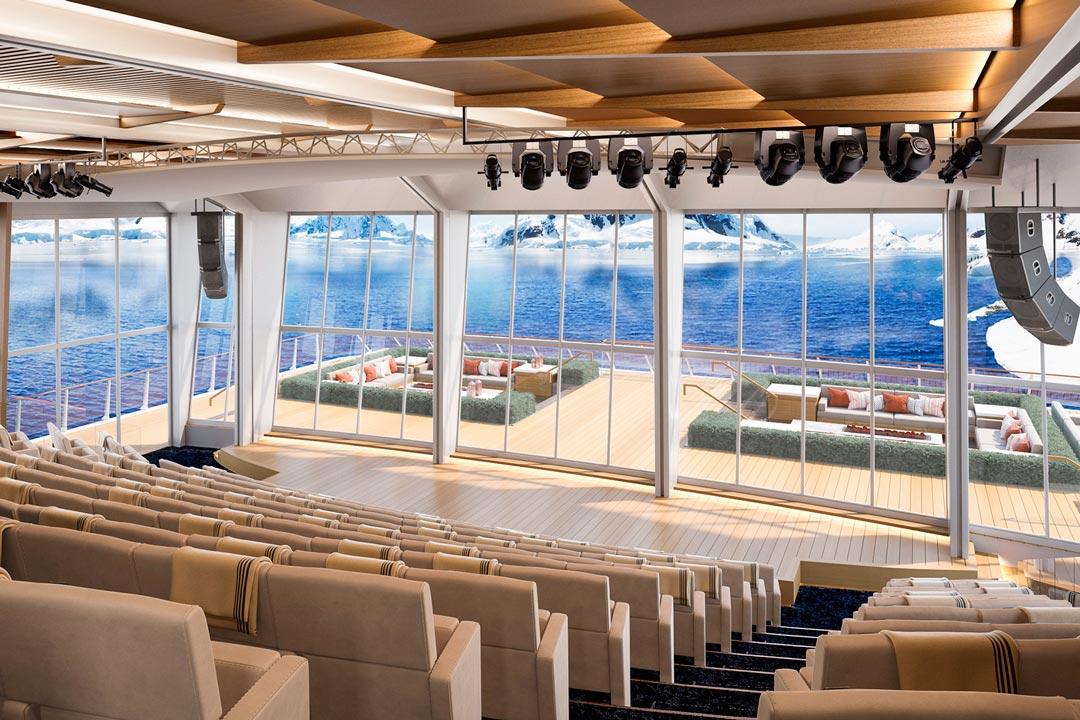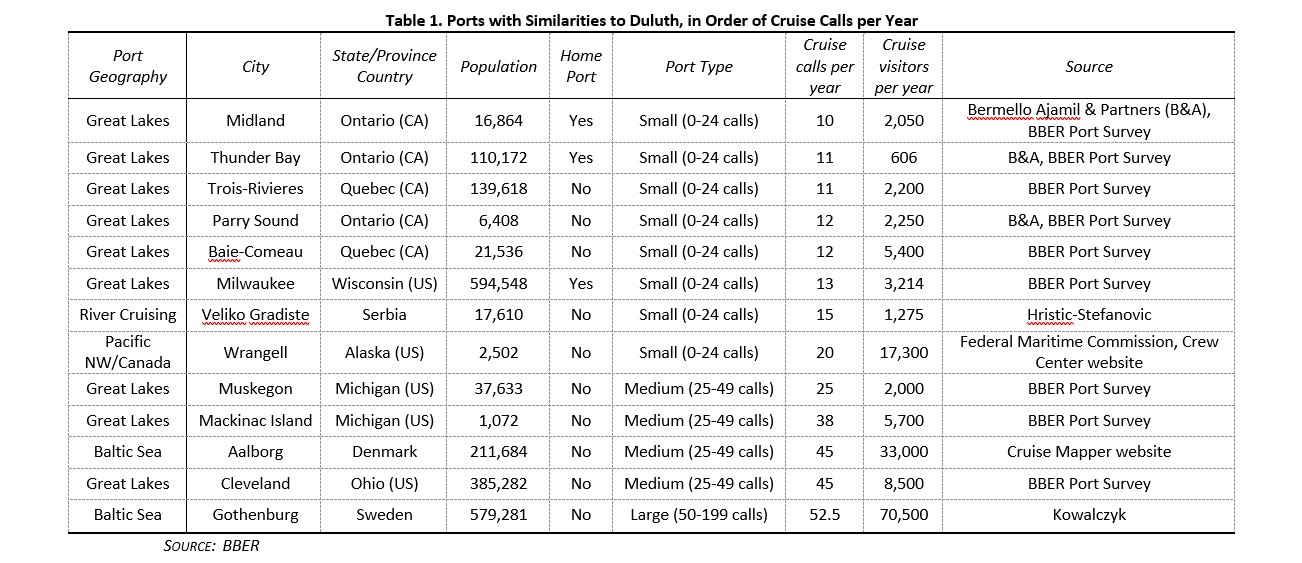For the first time in nearly a decade, Duluth will see cruise ships docking in its harbor. The first ship, Viking’s newest expedition ship, Octantis, is expected to arrive May 30. Recent coverage of the announcement has been featured in the Duluth News Tribune and Business North.
Thanks to funding from Minnesota Sea Grant, the BBER published a report last summer examining this very issue. The results of the study were used by the Duluth Seaway Port Authority and the City of Duluth to better understand the potential economic impacts of the cruise industry on the city.
Using feedback from subject matter experts on the cruise industry, the study identified 13 ports with similarities to Duluth—nine of which are located on the Great Lakes St. Lawrence Seaway and four in other parts of the world. Based on data from those similar port cities, the BBER then estimated the economic impacts of three potential growth scenarios for the future of the cruise industry in Duluth.
Table 1 includes a list of 13 ports that the research team identified as having similarities to Duluth. These cities were selected because they share one or more characteristics with Duluth (e.g., small- and mid-sized cities, remote destinations, Great Lakes region, small vessel cruise ships, northern climates, emerging destinations). The table includes the location of the port, the city’s population, whether it serves as a home port, the number of cruise calls per year, and the number of cruise visitors per year.
Using information from these similar port cities, the study identified three scenarios that reflect the range of potential benefits for Duluth as a cruise destination in the coming years.
Scenario 1, Early Adoption, assumes a small number of cruise calls (n=7) per year. This scenario is similar to what Duluth will experience this summer, when between seven and nine ships from Viking, American Queen Voyages, and Pearl Seas cruise lines are expected to visit the city.
Scenario 2, Expanding Interest, assumes that Duluth could see somewhere between 10 and 20 cruise calls annually, with an average of 15 per year. It’s possible that as early as next summer—once construction along the seawall structure in front of the DECC is completed, allowing cruise ships to dock even closer to the DECC facility—this scenario could materialize.
Scenario 3, Premier Destination, assumes robust growth in Great Lakes cruising in the coming years and growing interest in Duluth as a destination. In Scenario 3, Duluth could see somewhere between 30 and 50 cruise calls annually, averaging 40 per year. This scenario would likely require significant investments in cruise tourism infrastructure in the Duluth harbor, as it would mean hosting two to three cruise ships each week throughout the summer months. Scenario 3 also assumes expanded interest in Duluth as a destination for Viking as well as the other Great Lakes cruise companies, such as Victory, Pearl Seas, Ponant, and Hapag-Lloyd. While this scenario may seem ambitious for Duluth, it is not impossible. In an interview for the BBER study, Matt Grimes, Vice President of Maritime Operations at Viking Cruises, cited the city of Aalborg, Denmark (population 211,000; right click to translate the page to English) as an example. In 2014, Viking added Aalborg to its cruise itinerary, beginning with five or six cruise calls per year. In 2020, the company booked 45 cruise calls to Aalborg’s port. In July 2019, the Port of Aalborg introduced a new policy that limits the number of daily visiting cruise ships (calls) to one per day, in response to the increasing number of cruise vessels visiting the port.
In terms of economic impacts, Scenario 1, which assumes seven cruise calls, 2,520 passengers, and 1,785 crew members per year, could create 12 additional jobs in the study area, through direct, indirect, and induced effects. Scenario 2A (port of call), which assumes 15 cruise calls, 4,125 passengers, and 2,400 crew members per year, could create about sixteen additional jobs in the study area. The most ambitious scenario could add roughly 61 jobs to the local economy.
Depending on Duluth’s future growth in the cruise industry and whether the city serves as a port of call or home port, the study area of the Duluth-Superior metro area could see between $392,000 and $2.3 million in additional labor income, between $630,000 and $5.2 million in additional value added to the economy, and between 12 and 61 new jobs. If the cruise industry were to expand to 40 cruise calls per year and Duluth serves as a home port, the cruise industry could add more than $10.9 million in additional output (or spending) to the Duluth-Superior metro area.
The scheduled visits to Duluth by Viking Cruises this summer are the first steps to realizing the potential economic benefits outlined in our study. The BBER hopes to examine this topic more in the coming years.
For more information on this topic, check out our blog post from last fall or read the full study, The Economic Value of the Cruise Industry to the Duluth-Superior Metropolitan Statistical Area.

